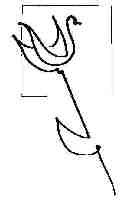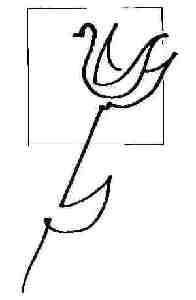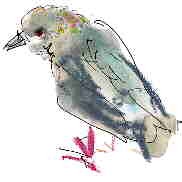Norman
Allan | ||||
 |
Dr. Norman Allan's Vol
4, No. 2, |  |
|
| ||
| * * * | ||
|---|---|---|
| My half year sabatical from this newsletter was due to my working (long hours), for a while, with a "spinal decopmpression" clinic. Mechanical spinal decompression can, it seems, regenerate lumbar and cervical discs, and suck discal herniations back-in. Take a look at my spinal decompression page. | ||
* * *
| ||
| * * *
| ||
There's
a really interesting story in the N.Y.Times on line about a protein called filaggrin.
Filaggrins bind the skin together and a gene defect is a major aspect of rashes
and eczema! Its a long story so I've put it at the
bottom... | ||
| * * * | ||
Sleep
Drugs Found Only Mildly Effective, but Wildly Popular The
new generation of sleeping pills, Ambien,etc., reduce the average time to go to
sleep 12.8 minutes compared with fake pills, and increase total sleep time 11.4
minutes. | ||
| * * * | ||
Chronic
Fatigue Gets Real: New York Times, 17 July 2007 | ||
| * * * | ||
Low
Buzz May Give Mice Better Bones and Less Fat Dr.
Rubin of the State University of New York "put mice on a platform that buzzes
at such a low frequency that some people cannot even feel it.(I
think the author means "amplitude". The only frequency the article mentions
in 90Hz, which is audible.) The mice stand there for 15 minutes a day,
five days a week. Afterward, they have 27% less fat than mice that did not stand
on the platform - and correspondingly more bone. ... There is a earlier entry about vibration (from vol3 no 1) reproduced below where others had found that some vibrations increase bone and muscle mass. I think that music, singing, chanting, may turn on these vibratory responses (see salubrious vibrations on my website for the same texts), but it would need an engineer to calculate the orders of magnitude. | ||
| * * * | ||
Tai
Chi improves resistance to Shingles: | ||
| * * * | ||
There's a really interesting story in the N.Y.Times on line about a protein called filaggrin. Filaggrin pulls together the keratin protein filaments in the skin’s outermost layer. The molecule also holds water in, Without filaggrin, the usually impervious barrier formed by the skin is compromised. It turns out that a large proportion of people with rashes have a filaggrin gene problem. "In 2006, Irwin McLean, a geneticist at the University of Dundee in Scotland, and Dr. Alan Irvine, a pediatric dermatologist at Our Lady’s Hospital for Sick Children in Dublin, Ireland, reported that chronic eczema was rampant among families carrying a defective gene for filaggrin," "Filaggrins are filament-associated proteins which bind to keratin fibers in epidermal cells." Wikipedia (the skinny) filaggrin, a skin protein that serves
as a natural moisturizer ... filaggrin pulls together protein filaments and flattens
out dead cells to form the skin’s outermost layer. The molecule also holds
water in, moisturizing the barrier. ... Without it, the usually impervious barrier
formed by the skin is compromised by cracking. The prevailing theory that chronic eczema is primarily an allergic disease has been challenged in recent years. Genetic studies suggest that a defective, leaky skin barrier is the initial cause in up to half of eczema cases seen by doctors. Topical drugs that reduce inflammation are still the mainstay of treating rashes, but new genetic findings highlight the importance of keeping the skin barrier intact by frequent use of moisturizers. For millions of people who suffer from chronic eczema, life can become a hellish existence in which patches of dry skin become red and inflamed and constantly cry out: scratch me! “It’s like having poison oak or poison ivy 24 hours a day, seven days a week, forever,” said Vicki Kalabokes, chief executive of the nonprofit National Eczema Association in San Rafael, Calif. The best treatments, like prescription creams and ointments that tamp down inflammation, can provide some relief. Antihistamines may aid nighttime sleep, and a good skin-care routine of slathering on moisturizers and avoiding irritating soaps also helps. But for many patients who still scratch through the night and hide crusted, oozing infections under long sleeves and pants, the medical world has little more to offer. That could change, thanks to recent research that has led to new thinking about why chronic eczema happens. In a sort of chicken-versus-egg turnabout, researchers have challenged the prevailing dogma that chronic eczema is mainly an allergic disease that leads to skin dryness and rashes. Instead, a growing number of experts believe that a structural defect of the skin is the primary culprit, instigating the immunologic problems seen in patients. For decades, allergists embraced the idea that eczema arose from an immune overreaction inside the body, leading to inflammation and cracked, itchy skin. Skin cracking, in turn, let in more allergens, irritants and microbes that further fueled the cycle. The theory was supported by the observation that eczema sufferers show high blood levels of an immune defense protein called IgE and often develop immune-related ailments like asthma, food allergies and hay fever. Many dermatologists, on the other hand, have argued that allergies do not cause chronic eczema. Over the last decade, some proposed that an intrinsic defect of the skin occurs first and then causes immunological weirdnesses. In other words, trouble develops from the outside in. The major breakthrough came in 2006, when Irwin McLean, a geneticist at the University of Dundee in Scotland, and Dr. Alan Irvine, a pediatric dermatologist at Our Lady’s Hospital for Sick Children in Dublin, Ireland, reported that chronic eczema was rampant among families carrying a defective gene for filaggrin, a skin protein that serves as a natural moisturizer. Without it, the usually impervious barrier formed by the skin is compromised by cracking. “Our work has really said, ‘Look, it’s not all just about the immune system,’ ” Dr. Irvine said. The flawed gene fails to produce filaggrin, which normally pulls together protein filaments and flattens out dead cells to form the skin’s outermost layer. The molecule also holds water in, moisturizing the barrier. About one-third to half of all children and adults with moderate to severe chronic eczema have a nonfunctioning filaggrin gene, Dr. Irvine said. Researchers have identified nearly 40 filaggrin mutations, including variations specific to Asian populations. And evidence suggests that the risk of childhood asthma is nearly doubled in those who inherit one of these mutations, but only after eczema arises first. With a dry, filaggrin-deficient barrier, almost anything on the patient’s skin — dust mites, pollen, food proteins or bacteria — can easily get through, said Dr. Jon M. Hanifin, a dermatologist at Oregon Health & Science University in Portland who was not involved in the genetic work. The new thinking is that the foreign intrusions activate immune cells to respond and crank out IgE, causing the inflamed skin lesions. That process may also prime the immune system to overreact to specific allergens, leading eventually to asthma, hay fever and food allergies. The genetic findings could help explain why chronic eczema has grown increasingly common in industrialized countries in the past two decades, Dr. Irvine said. Environmental factors like increases in pollutants or use of soaps, air conditioning and central heating may dry out or irritate a defective skin barrier. But debate rages on over how much of eczema may still originate from allergic disease. It is unclear whether a leaky skin barrier is always the initial culprit. Many people who do not have a filaggrin mutation still get eczema, and eczema does not occur in everyone who carries the genetic defect, noted Dr. Donald Leung, an immunologist at the National Jewish Medical and Research Center in Denver. While a genetic skin barrier defect is important, he said, the immune and environmental factors also play key contributing roles in this complex disease. Dr. Leung’s own research has revealed that inflammation itself can reduce filaggrin levels in the skin. On the other hand, mutations in additional skin barrier genes may yet be discovered. It may be possible to create eczema drugs enhancing filaggrin production. For now, the genetic studies magnify the need to protect the dry, damaged skin barrier — and keep out irritants and allergens — by hydrating it and keeping it intact. That means that along with using anti-inflammatory medications, it is crucial for eczema patients to follow the basic advice on moisturizing to prevent flare-ups, Dr. Hanifin said. For infants, the research even raises the possibility of prevention. “It points up to
us that maybe we can reduce the impact of asthma and allergic rhinitis by treating
the skin in kids with eczema early,” he said, “by moisturizing right
from day one.” | ||
| * * * | ||
the
way I work with healing
7:00
to 9:00 at 2 College Street, suite 305 “Energy”
is mysterious CranioSacral work is a useful portal/entry
The workshop will introduce us to many aspects of this wonderful, gentle therapy. CranioSacral therapy is subtle. You don't have to be a rocket scientist to learn it, but you need to be sensitive. Cranial work opens us to a new understanding of the body and gives us a powerful tool to relax and to heal.
Phone
416 928 9272 | ||
| * * * | ||
Mayan Teachings with Fernando Hernandez: | ||
* * *
| ||
* * * | ||
| ||
 |
|
Dr. Allan'sNewsletter: Apr 2008: snippets from newspapers which I hope are of interest. Dr. Allan'sNewsletter: Oct 2007: as above Dr. Allan's Newsletter: Sept 2007: Dr. Allan's Newsletter: July 2007: Dr. Allan's Newsletter, Spring 2007: Dr. Allan's Newsletter, Winter 2007: Dr. Norman Allan's Newsletter, May 2006: Dr. Norman Allan's Newsletter, April 2006: Dr. Norman Allan's Newsletter, March 2006: Dr. Norman Allan's Newsletter, February 2006: Dr. Norman Allan's Newsletter, January 2006: Dr. Norman Allan's Newsletter, December 2005: Dr. Norman Allan's Newsletter, November: 2005 Dr. Norman Allan's Newsletter, October: 2005 Dr. Norman Allan's Newsletter, August/September: 2005 Dr. Norman Allan's Newsletter, June/July 2005: Dr. Norman Allan's Newsletter, May 2005: Dr. Norman Allan's Newsletter, March/April 2005: an essay on immune tonics published in "Healthy Directions" - and snippets from newspapers, various, which I hope are of interest. Dr.
Norman Allan's Newsletter, February 2005: snippets from newspapers, various,
which I hope are of interest - and a discussion of "C Reactive Protein"
as an indicator of risk for heart disease. |
|---|
|
From vol 3 no 1: An interesting clipping that
I've stumbled on since the last letter concerns vibration:(Globe and Mail, 13
June 2006) "SCIENTIST GETS VIBES TO BUILD BONES. Device to help space travelers
approved to treat sufferers of osteoporosis." The device is a machine that
generates vibrations - vibration implies acceleration/deceleration, and is therefore
somewhat like gravity - therefore in theory, and it seems in practice, good for
maintenance of bone mass in zero gravity (it was designed for use in space). On
earth, the article says, "a person who stands on [the platform of the vibration
device] for 20 minutes a day can build bone density an average of 2 percent a
year. ... By sending small vibrations through the body - moving about 50 micrometers
(or the thickness of a few human hairs) up and down and repeating at a rate of
34 cycles per second - the platform triggers musculoskeletal stimulations that
naturally occur... the vibrations from the platform are set to a frequency that
[generates acceleration that] is one-third that of gravity... and is therefore
safe. Other devices (exercise machines) which generate 4 to 15 gravities are dangerous,
we are told. The thing that I find interesting here is that a relatively subtle vibration is having an appreciable (positive) effect on body metabolism and function. I am therefore wondering what the vibrational effects of chanting, OM, for instance, are? We'd need an engineer to tell us about the difference in order of magnitude between that devise and the vibrations that are set up in your body by, a) a rock band in a bar, b) by chanting, OM for instance. However, orders of magnitude might or might not be of relevance here. Subtle vibrations may be having physiological effects. One would have to look and see. Meanwhile, the safe course would be to do the chanting. It's bound to have salubrious effects at many levels (if not bone mass and muscle mass - muscles, that too was in the article). ("Salubrious" = health promoting - forgive the use of a relatively obscure word.) "Over all the bone density of the controlled group (the reporter has got this wrong - he means "experimental group" as compared to the control group) increased by 3 percent during a year, and muscle mass improved by 4 percent." So
get chanting, OM (or what you fancy). |